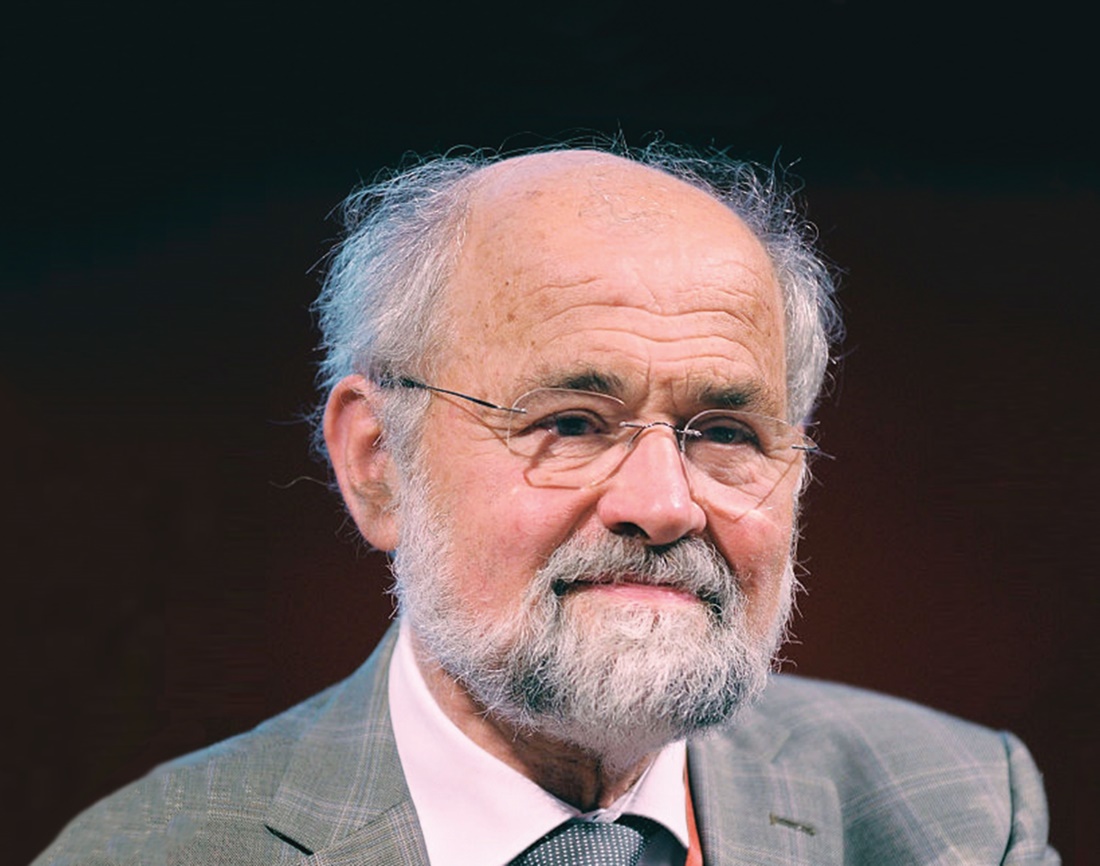Erwin Neher, Doctor of Science honoris causa

Nobel Prizes are mainly awarded to people who have made significant contributions for mankind. The Medal of the Nobel Prize in Physiology displays an image of “the Genius of Medicine holding an open book in her lap, collecting the water pouring out from a rock in order to quench a sick girl’s thirst”, inscribed in Latin, “Inventas vitam juvat excoluisse per artes”, which translates to “inventions help improve life skills.”
German biophysicist, Prof. Erwin Neher was awarded the Nobel Prize in Physiology or Medicine in 1991, and is highly recognized for his significant contributions. Prof. Neher and Prof. Bert Sakmann were the first to record the currents of single ion channels on a live cell through the development of the patchclamp technique, which has led to significant discoveries for human beings to understand the functions of single ion channels on a live cell. This new discovery not only had a revolutionary impact on the field of neuroscience and cell biology, but also moved forward the studies on more disease-specific innovative drugs and treatments and brought about benefits for human health, therefore improving people’s life. As such, Prof. Neher, along with Prof. Bert Sakmann, was awarded the Nobel Prize.
The international academic community highly and unanimously affirms Prof. Neher’s research achievements. As early as 1986, he was awarded the Louisa Gross Horwitz Prize from Columbia University together with Bert Sakmann, in 1987, he received the Gottfried Wilhelm Leibniz Prize of the Deutsche Forschungsgemeinschaft (German Research Foundation); after becoming a Nobel laureate he was elected to be a Foreign Member of the British Royal Society; and he was awarded an honorary degree from the University of Pavia in 2000. Prof. Neher is now the Director of the Max Planck Institute for Biophysical Chemistry in Göttingen and concurrently heads the Department for Membrane Biophysics of the Institute. He is also a Professor at the University of Göttingen and a co-chair of the Bernstein Center for Computational Neuroscience, Göttingen. In recent years, he’s been invited to give lectures in the Chinese Academy of Sciences, Tsinghua University, Nanjing University, and other renowned institutions in mainland China. In July 2015, he gave a wonderful plenary lecture on “2015 World Medicine Summit” organized by Macau University of Science and Technology in Macau.
In trying to understand the remarkable achievements Prof. Neher has made, we seem to be able to find a fine explanation in the following remark which he noted in a talk, “Research is something whose result is hard to predict, which, to some extent, relies on chance; however, having a solid base of knowledge and techniques is still a foundation, which, in due time, could meet with new knowledge and techniques and arrive at an innovation.” Prof. Neher’s research foundation comes precisely from his “solid base of knowledge and techniques”. From 1963 to 1966, he studied physics at the Technical University of Munich, which is a top German institution that has successfully fostered many remarkable scientists, such as Rudolf Diesel, father of the diesel engine, Carl von Linde, father of refrigeration, and Ludwig Prandtl, father of fluid mechanics. In 1966, he was awarded a Fulbright Scholarship to study in the US. He spent a year at the University of Wisconsin–Madison and earned a master’s degree in biophysics. In 1972, he joined the Max Planck Institute in Göttingen, and from 1983 he’s been Director of the Department for Membrane Biophysics, Max Planck Institute for Biophysical Chemistry in Göttingen. What’s worth noting is that starting from when he was a student, Prof. Neher has been obsessed with the electrical currents in the human body and developed a strong research interest in the area; however, in order to pursue more in-depth studies, he decided to transfer from physics to biophysics. While he was conducting the relevant research, he studied the findings of the relevant scientists, and participated in a number of research projects at different laboratories. While at the Charles Stevens Laboratory at Yale University for post-doctoral work, he made available “a perfect time period” to pursue in-depth thinking on single cells and to conduct a great number of experiments at the Laboratory. That is to say, his research on the record of the currents of single ion channels on a live cell, through the development of the patch-clamp technique, had long started and therefore was a further development of his postdoctoral work at Yale. As such, Prof. Neher’s courage and commitment to research and vision deserve great admiration and respect from all of us!
Another trait of Prof. Neher that’s also worth our admiration is that he’s walked out of the academia into the zone of social reality. In 2003, along with another 21 Nobel laureates, he signed the Humanist Manifesto. Humanism is a progressive philosophy of life that, without supernaturalism, affirms our ability and responsibility to lead ethical lives of personal fulfillment that aspire to the greater good of humanity. As such, abiding by the principle of “taking human beings as the essential”, it has doubtlessly created clear and noble guidelines for human beings when they seek for and think about the meaning of life.





